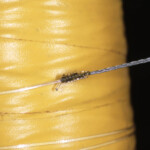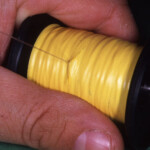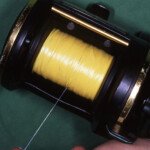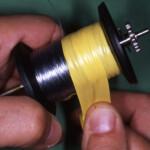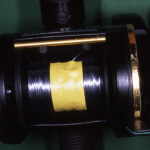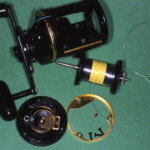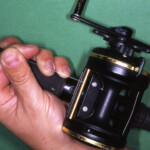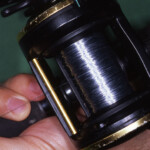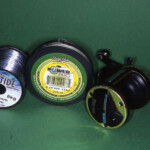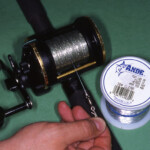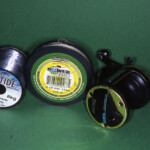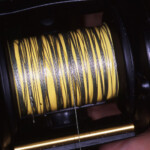Braid-bite is the scourge of multiplier users. Here we show you how to spool-up professionally and reduce the likelihood of ‘biting’.
The swing to braided lines in recent years has been massive. Boat anglers, on the whole, agree that braid’s advantages more than compensate for any slight disadvantages, but niggling problems like ‘braid-bite’ persist. Braid-bite, braid-bind or braid-jam as it is sometimes called, is the common complaint whereby the top layers of the braid infuriatingly dig in and become embedded in those below. The result is an ugly ‘grooved’ surface line profile, which in turn leads to spool snagging, or jamming to a dead-stop as the line tries to leave the spool. Biting is also the main reason why braid carries its own set of nasty casting problems when using multiplier reels in particular.
Ironically perhaps, braid-bite is an inherent problem that has much to do with its lauded and applauded lack of stretch – the same lack of stretch which provides us with that superior feel and vastly enhanced bite detection that diehard mono users can only dream about. Part of the problem is how the braid is wound onto the spool in the first place. Typically, an underlay of mono backing is first wound onto the reel spool to fill it out. The backing is simply knotted to the braid, which is then wound fully onto the spool in readiness for fishing. But herein lurks a problem… because the braid is sitting atop an infirm and uneven base layer, and because of its lack of stretch, the taught upper layers habitually pull into the coils below.

Things get even more ugly when fish are being caught, and a few slack turns of braid are inevitably ground into the mix. At this point it’s worth mentioning that a good quality, large fixed spool reel with a profile-perfect, oscillating line-lay system will counter and eliminate much of the braid hassle associated with multipliers. If casting with braid is on your agenda, then I would strongly suggest you look at a suitable fixed spool. For multiplier users there is however, a simple trick that will go a long way towards kicking braid-bite into touch. The key is to ensure that the braid is sitting on a solid and fairly even base layer. In the same way a firm mattress can sort out a bad back, a solid foundation does much to cure badly behaved braided lines. Lock the backing down securely with a few tight turns of electrical insulating tape, and you are well on the way to beating those biting braid demons.
Follow the step-by-step tutorial gallery below.
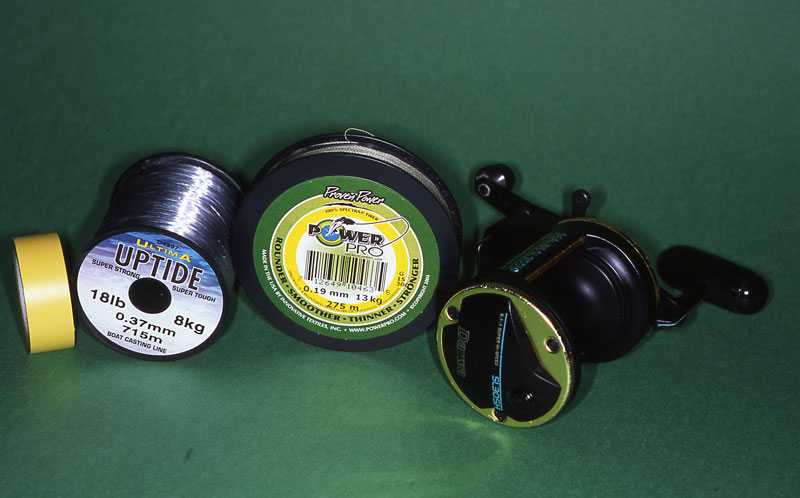
We have chosen to use a Daiwa SL30SH reel. You also need some mono for backing, electrical insulating tape and your preferred braid.

A spool knot or similar is used to secure the mono to the spool.

Wind the mono backing onto the spool under firm tension.
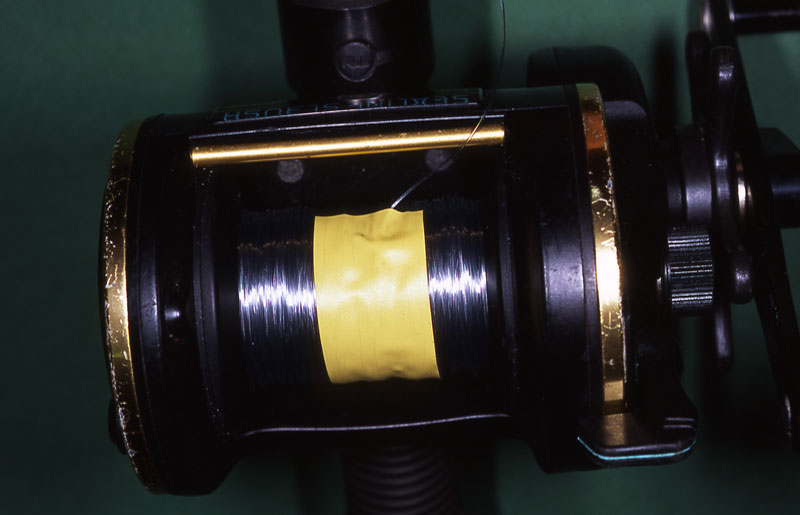
When you have filled the spool with enough backing, hold the loose end in place with a small piece of tape to stop it springing into loose coils.

Undo the left-hand side-plate screws, detach the outer ring and side-plate, and pop the spool out. Take care not to lose the brake block/blocks located on the spool spindle pin.

Wrap several layers of insulating tape completely around the mono backing. Work the tape to the middle of the spool and pull at least 24 inches of mono through the binding, before taping fully taping over the mono base layer.

The 24 inches of mono are to connect to the top layer of braid. The spool should now look like this.
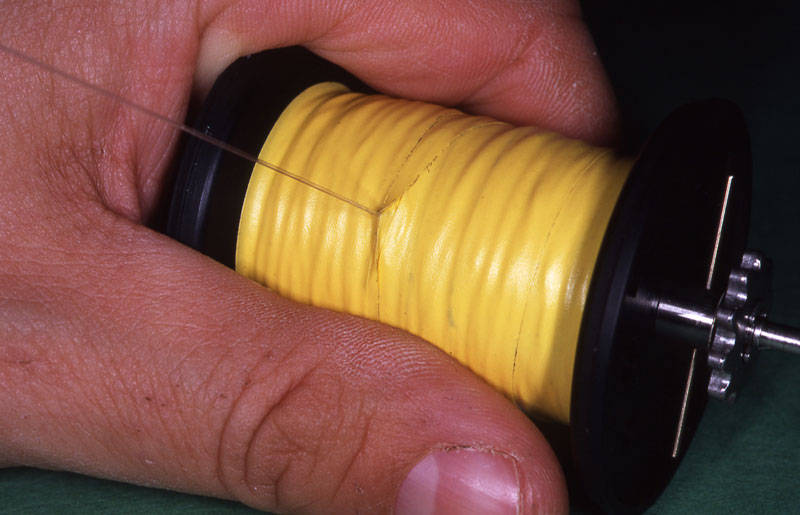
Now slip the spool back into place and reassemble the reel, not forgetting to pop the brake block or blocks back in place.

Join the braid and mono using knots of your choice. We have used a Spider Hitch to form a loop in the braid, and joined the mono using an Albright knot to produce this knotted connection.

Wind the braid on under firm tension and distribute it evenly across the spool. Bedding braid onto this solid foundation, as opposed to an underlay of spongy loose mono, will drastically reduce braid-bite.

When the reel is fully spooled with braid, attach an appropriate mono leader to complete the job.

